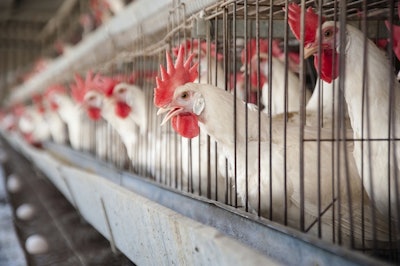
A new lighting system could improve the welfare and skeletal quality of laying hens, according to research from Purdue University.
The study’s results found that the lighting system, known as Pulsed Alternating Wavelength System (PAWS), appears to improve physiological and physical welfare, as well as most bone quality parameters in layers.
Researchers on the study believe the long-term benefits of the system could include improved bone quality and welfare, which may lead to increased longevity and hen productivity. Additionally, implementing the system in cage-free houses may help decrease keel bone damage.
PAWS lighting is currently being introduced to the industry and researchers on the project believe that producers can start implementing the system without worrying about harming the hens. However, it was stressed that much more research is required to solidify any potential benefits before installing the lighting system industry wide.
The study
The research project’s objective was to evaluate the effects of PAWS lighting on the welfare and skeletal quality of laying hens using traditional bone quality assessment methods and reference point indentation (RPI) measurement that has not been utilized in poultry research.
The study involved two PAWS flocks (PAWS1 and PAWS2) and a control flock that were all housed in conventional cages at a commercial facility.
The study’s results showed the physiological welfare of the PAWS hens showed improvement at 22 and 32 weeks of age, according to their reduced serotonin turnover ratios. However, hens between 50 and 52 weeks of age had lower serotonin turnover ratios compared to the younger hens, regardless of treatment.
PAWS2 showed decreased welfare quality scores in most of the parameters, especially in feather coverage, while PAWS1 varied more. Additionally, PAWS2 had reduced keel tip fractures at 50 and 52 weeks of age.
When analyzing bone quality parameters at 32 and 52 weeks of age, the control flock had decreased fracture force at 52 weeks. The fracture force of PAWS1 remained constant between the two ages, indicating increased bone strength. Digital bone mineral content (BMC) overall was higher in PAWS2 compared to the control at 32 weeks. Additionally, the RPI outputs were lower in PAWS2 compared to PAWS1 and the control, which indicates superior bone quality.


















